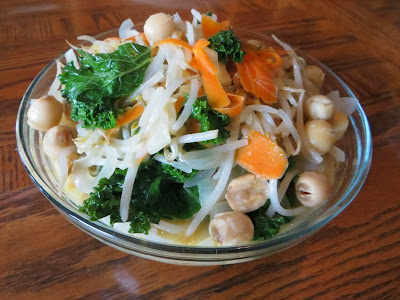3-4 T. coconut oilSaute the onion, garlic and ginger on low heat in the coconut oil. Add in the bean sprouts and shredded carrots and lightly sauté. When the bean sprouts and carrots are becoming tender (do not overcook), add in the fresh kale shreds and stir until the kale is a bright green. Serve immediately with brown rice and seaweed laver.
5 cloves garlic, sliced
2"-3" piece of fresh ginger, minced
1 large onion, thinly sliced
4 cups mung bean sprouts
1/2 carrot, shredded
1 can lotus seed, bamboo shoots, or water chestnuts (optional)
2 cups fresh kale, in large shreds
1/2 t. sea salt
8 Health Warnings Your Fingernails May Be Sending Source Your eyes may be the window to your soul, but, in many ways your, nails are the window to what’s going on inside your body. Here are some common nail problems and what they mean: Take a good look at your fingernails and you may notice subtle variations in the texture or color; white spots, a rosy tinge, rippling or bumps in the surface to mention a few. These imperfections may not look like much to you, but it’s more important than you might think to maintain healthy fingernails. That’s because to the trained eye, nails can provide valuable indications about your overall health. Hold a hand level with your nose about a foot out from your face and scrutinize each one. Look at the grooves, curves, ridges and dips. Notice how thick or thin they are and if there are any stark differences. Are your nails are chipped or broken. Make a note of the color of the nail itself, the skin under it as well as t...



Comments
Post a Comment